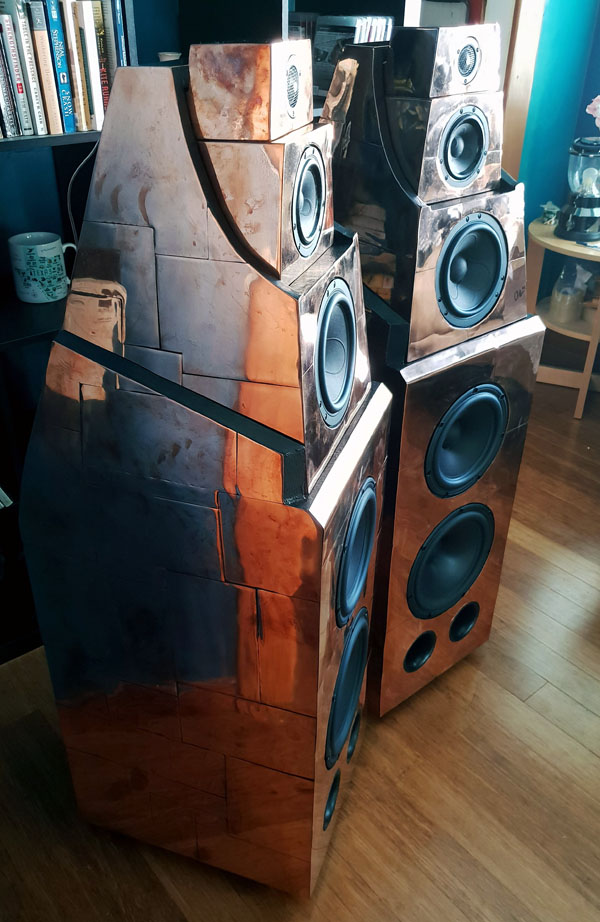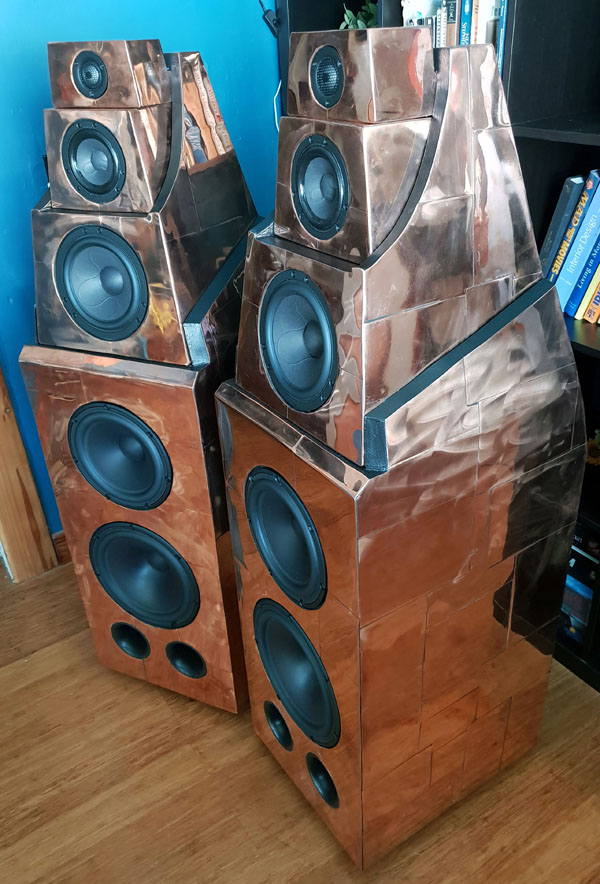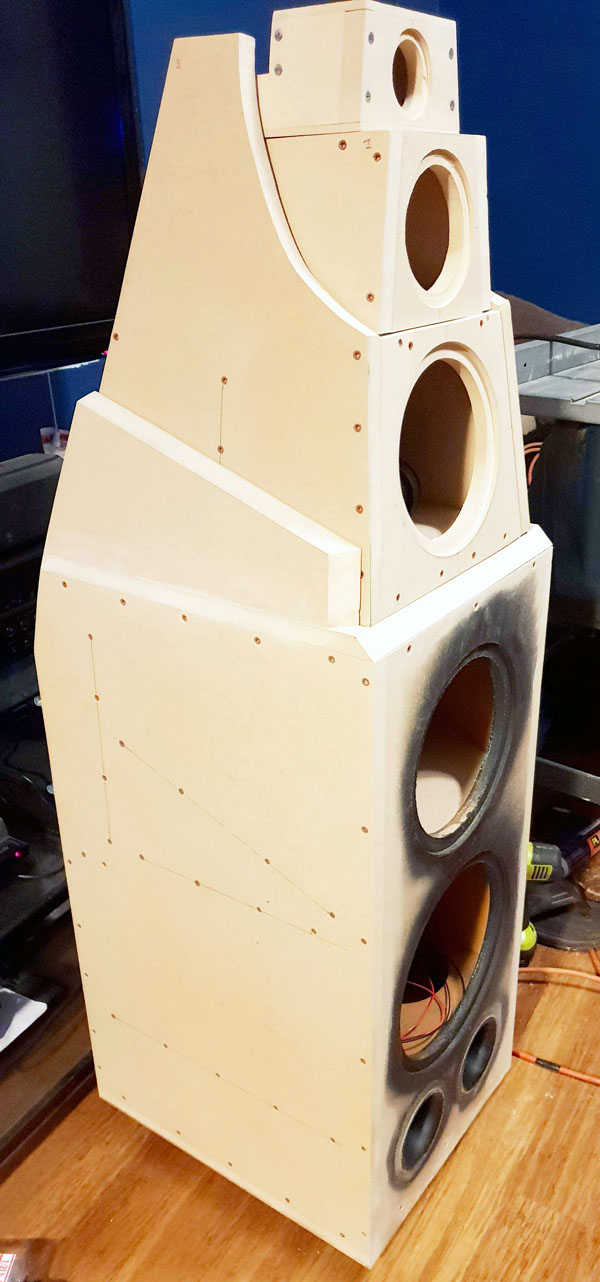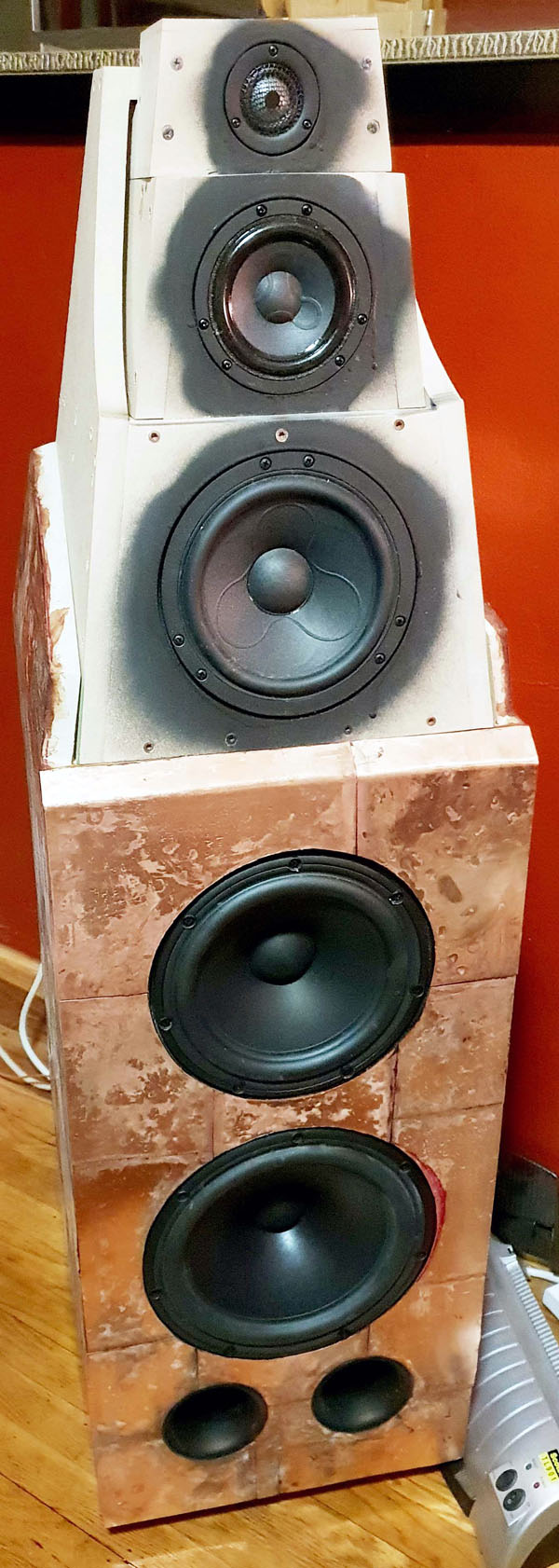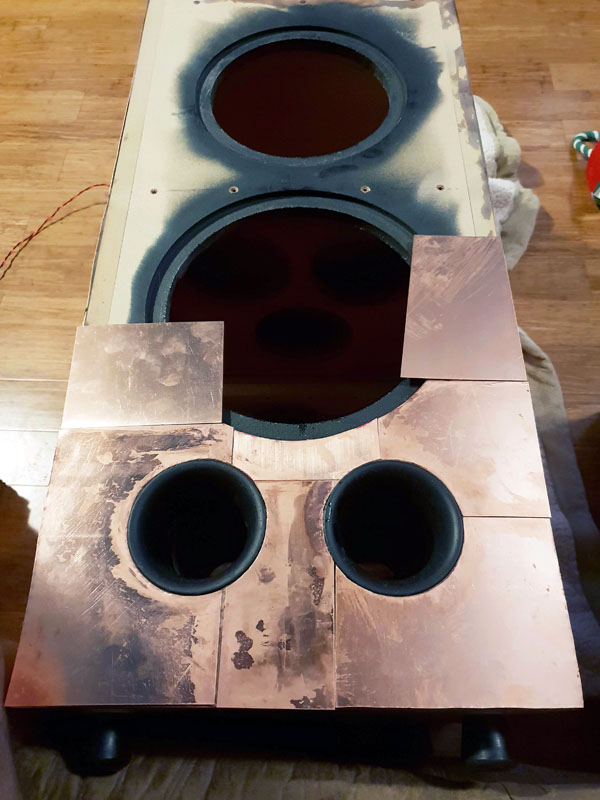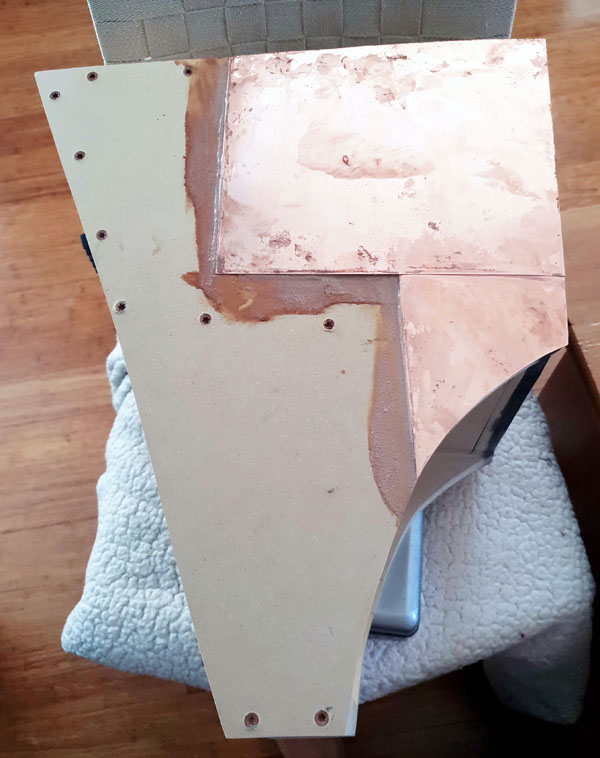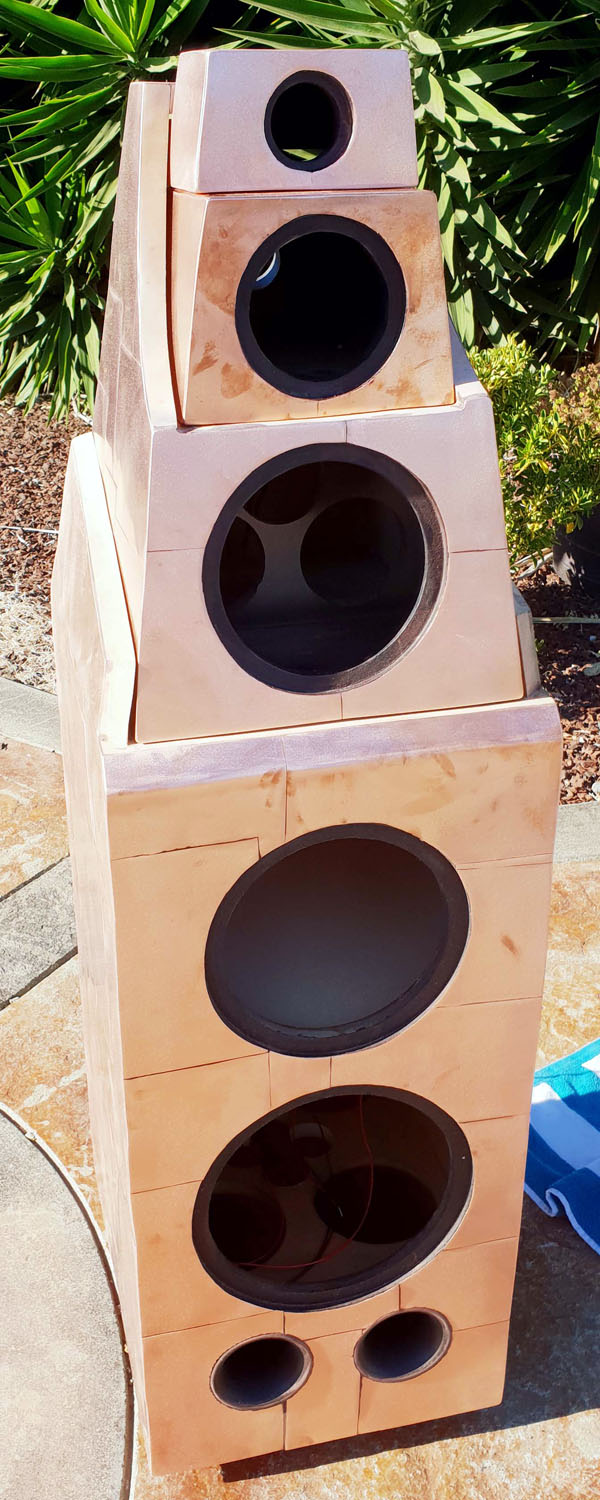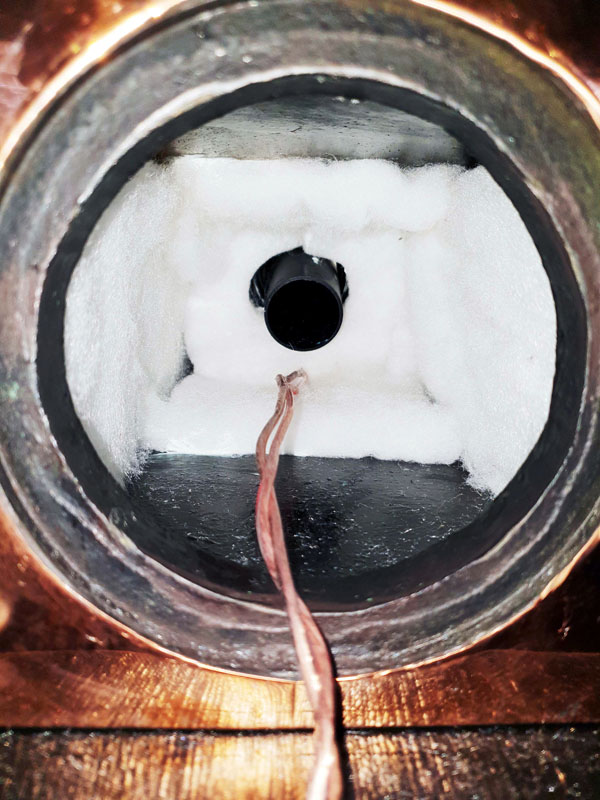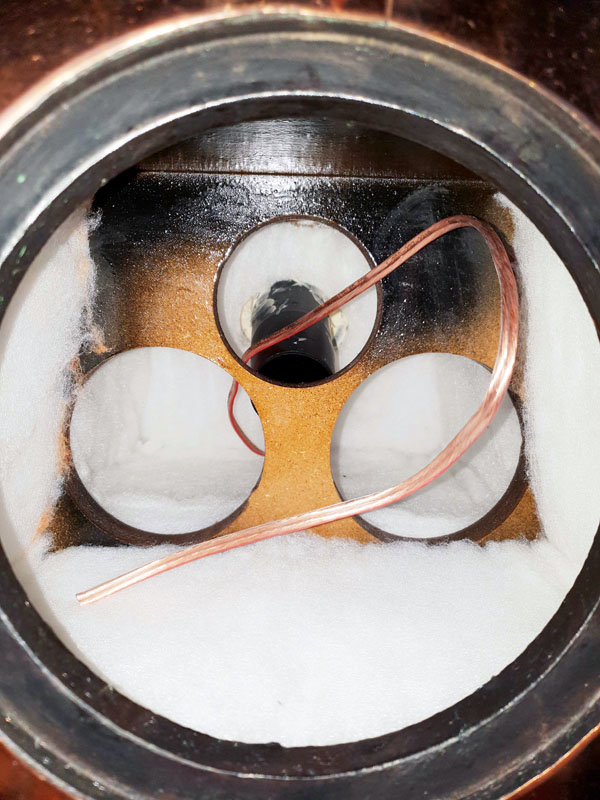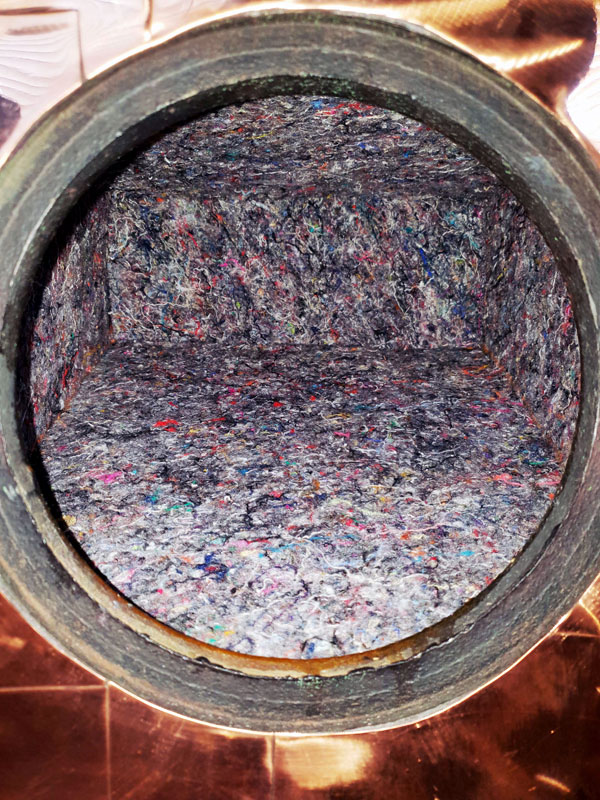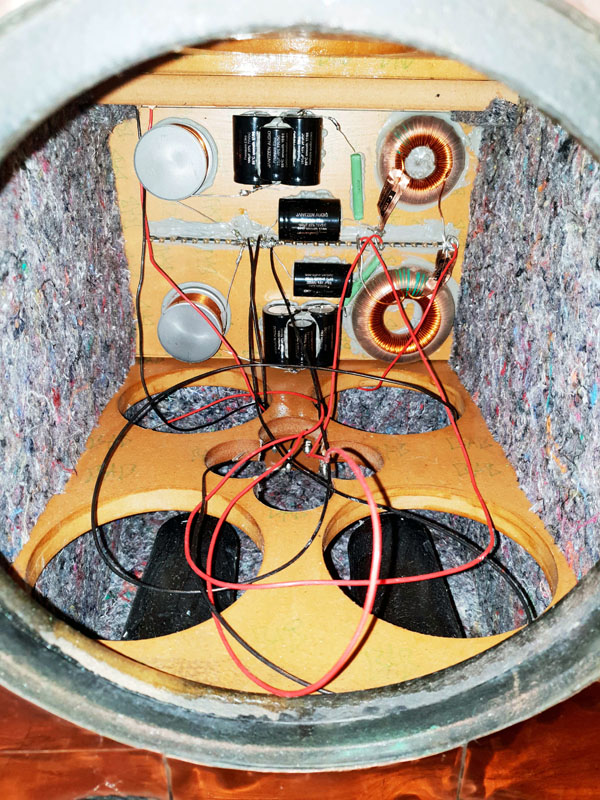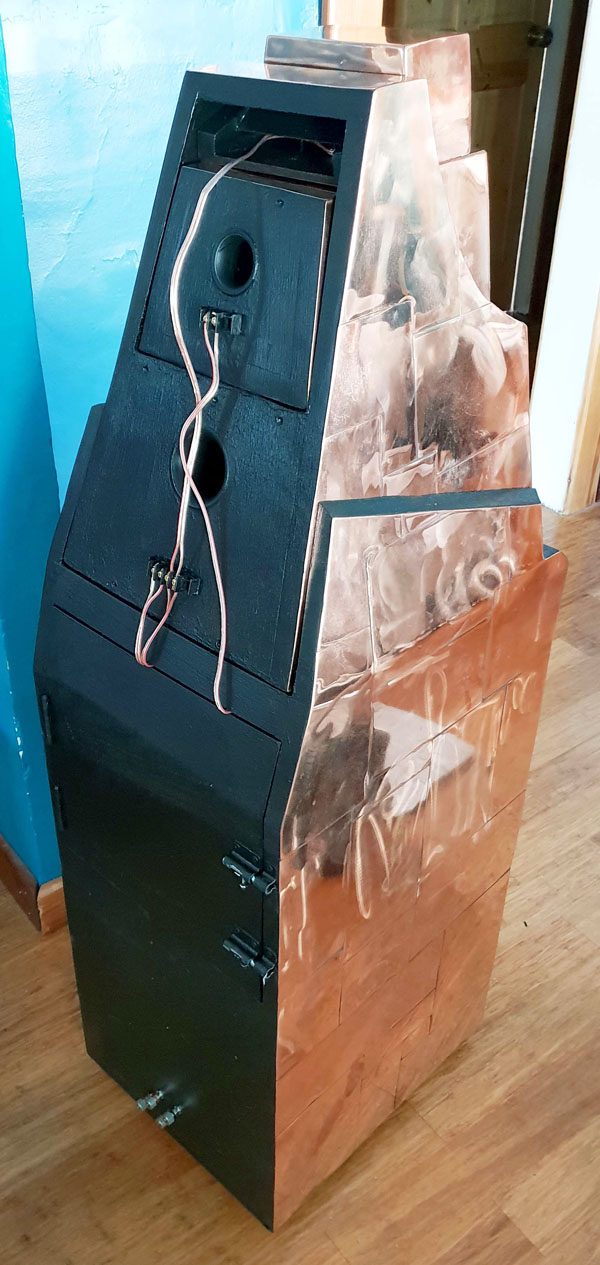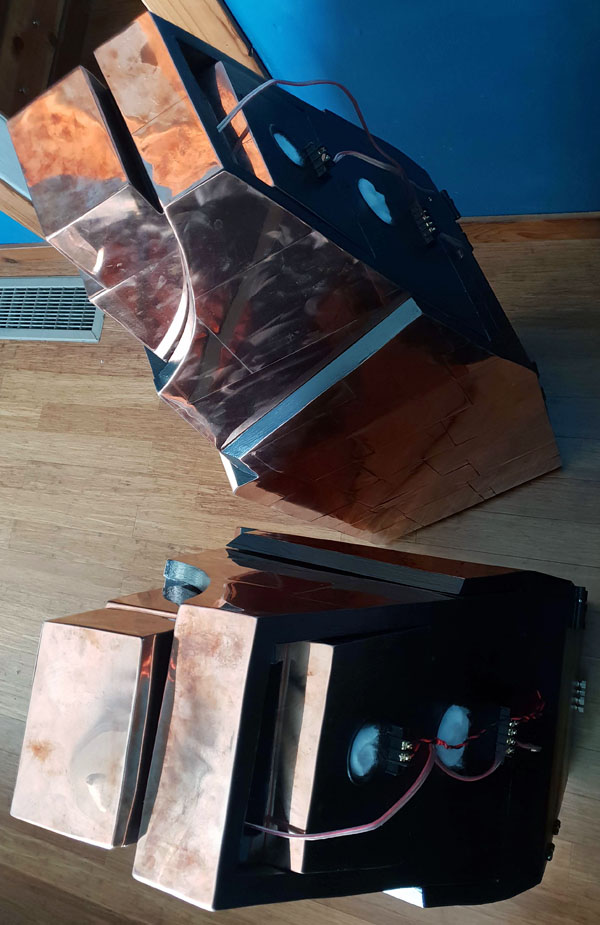ScanSpeak Illuminator-5, built by Brian, US
Copyright 2018 © Troels Gravesen
Salutations Troels,
I hail from the Bay Area of California. I built the Illuminator 5 design
to your specifications as much as I possibly could, and I would like to
share my experience with the sound and the construction process and
maybe give you some satisfaction in knowing that you inspired the
project.
This is the first speaker cabinet system that I have ever built, so some
mistakes were made along the way, of course. But it turned out pretty
much perfect as I compensated for all of the minor inconsistencies that
came about. First off, anyone who is planning on building this cabinet
system can predict at least 150+ hours will be necessary to fully
complete it; and around $6,000 USD. If you choose to build it just the
way I did, then more power to you, but it will likely take you an extra
120 hours as it did for me; total around 270 hours of labor. But the
fruit of this labor is absolutely heavenly sound that I can enjoy for
the next 50 years or so, and I am greatly satisfied with the result. I
may even try one of the Ellipticor builds at some point.
For this project to succeed, I needed about five 4'x8' panels of MDF at
around $30 each; $150. There was a lot of scrap from mistake cuts and
from not actually having the full size panels to work with; I needed
each MDF panel divided into three sections to properly fit in my sedan.
I am decently experienced with basic carpentry; making square shaped
constructions. But the angled cuts in this design take the difficulty to
a whole new level. The pay off is well worth it though. I love that this
build has angles to its shape and that is why I chose it.
You will also need some screws for the speakers, which amounted to about
$20 USD to get the proper sized screw for each individual driver.
And if you want your build to look like mine, then you will need about
45 lbs (20 kg) of copper sheets; cost me around $300. And a quality pair
of metal snips is essential too; around $20. I also chose to polish the
copper, and I already had a $100 angle grinder, so I only needed to buy
some polishing discs at around $25 and some polishing compound; I used
almost half a kilogram of polishing compound on the copper. You will
also need some good quality construction adhesive or wood glue to fasten
the copper sheets to the body of the cabinets; I used wood glue about
two gallons at $40.
Also, I have some advice for the legs. Making them with the standard
metal inserts into a hole drilled into the wood product was not a very
satisfactory or reliable option for me, since I knew they would be put
under considerable strain from being moved around during the next 50
years. Instead of the traditional method, I put four large washers in
each corner of the inside of the bottom of the cabinet and then I
drilled holes in the center of those washers; I had two panels on the
bottom of the cabinet for about 3.81 cm of MDF material. I then put four
nuts and washers on carriage bolts and put them through the holes from
the bottom of the cabinet into the interior. Inside are the washers that
I still had in place and I clamped down on each side of the cabinet by
tightening the nuts which when combined with the washers act as a very
robust weight distribution system that ensures that the cabinet will not
break or be damaged by any sideways force against the bolt; e.g. when
tilting or moving the cabinets. When using this method, you are also
able to adjust the height of the legs at any time, but loosening the
nuts and twisting the carriage bolts. I used some rubber feet to cover
the carriage bolts.
Of course, you will also need to have quality soldering equipment and
solder for the crossovers; I went all out and got a high end Weller
system for about $120 and about $10 for the solder. Then you will need
some adhesive to attach the crossover components to your board; I used a
high quality Loctite Fuze-It adhesive for about $7 a container. I used
two containers.
Also, it is optional, but if you want to install an easy maintenance
hatch for the crossovers, as I did, then you will need to buy some
hinges and your choice of latch; I chose a few simple bolt latches and
had no problems.
The total weight of the cabinets came in at about 150 lbs (68 kg) per
cabinet, drivers and all.
The most costly components will be time and patience, but trust me, in
the end your ears will be thanking you for the work you have done.
The sound is absolutely incredible. I have never heard sounds from music
at such a high volume and such a perfect clarity. Even at low volume, I
am able to discern all of the most minute sounds without difficulty. The
bass is a mindblower. I have never heard the low frequencies of a bass
coupled with a properly braced cabinet before. There is absolutely no
rattling noise at all. Imagine the exact opposite of this in the most
common form that you will come across: cars installed with aftermarket
bass systems. Usually, when I hear the amount of bass coming out of
those cars, the most obvious noise is not the deep melody of the bass,
but the harsh rattling of all of the components that are shaking in
their car. It is not a good sound, but instead just a loud sound. Cars
were not built to be speaker cabinets. In this system the bass moves
through you without overpowering the soundspace and you hear all of the
low frequencies distinctly and smoothly. Often it feels as if I am
totally enveloped in sound, and unless I am focusing I cannot pinpoint
exactly where it is coming from. And the high frequencies, the tweeter
sounds, those are a lot easier to manage with minimal bracing, but even
the lower mids are properly braced in this system so there is absolutely
no rattling and all of the sounds come out tight with distinct audible
gradations in each frequency of sound. There are subtleties of sound
that you can't hear with lower quality loudspeakers. There is
approximately zero audible distortion at any volume. There is no static
unless it is recorded on the sound file itself. I have yet to try the
speakers at their absolute maximum volume because it is just painful. I
have turned it up to the point where my ears were hurting but the music
was just as clear as normal listening volume. I will be enjoying these
for many years to come!
Mange tak,
Brian
